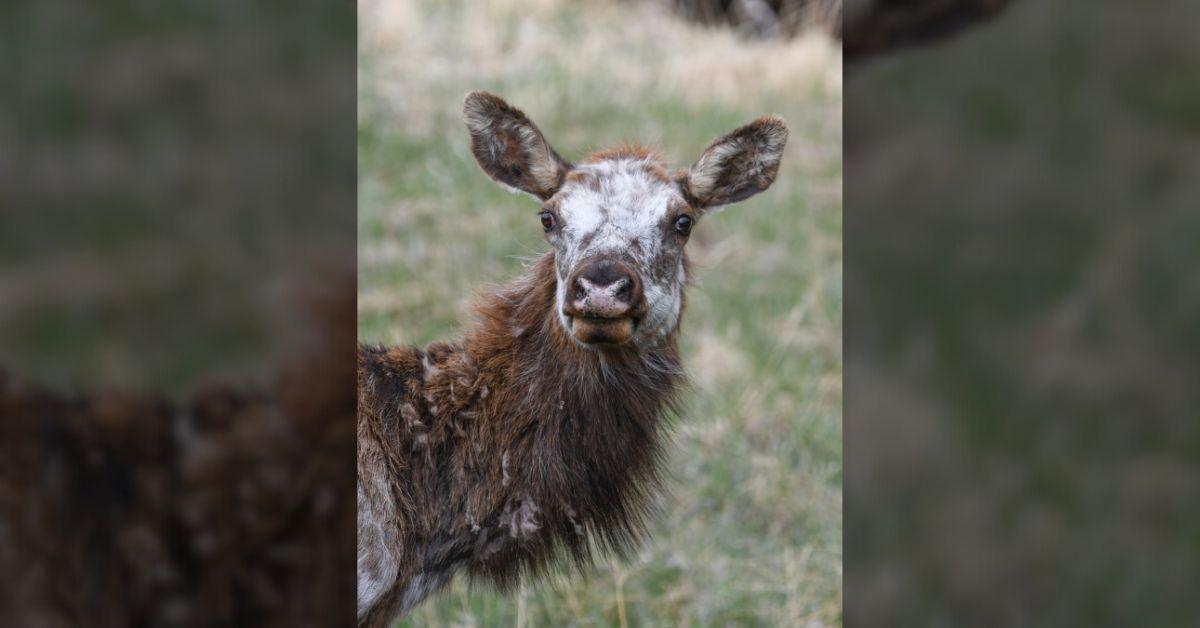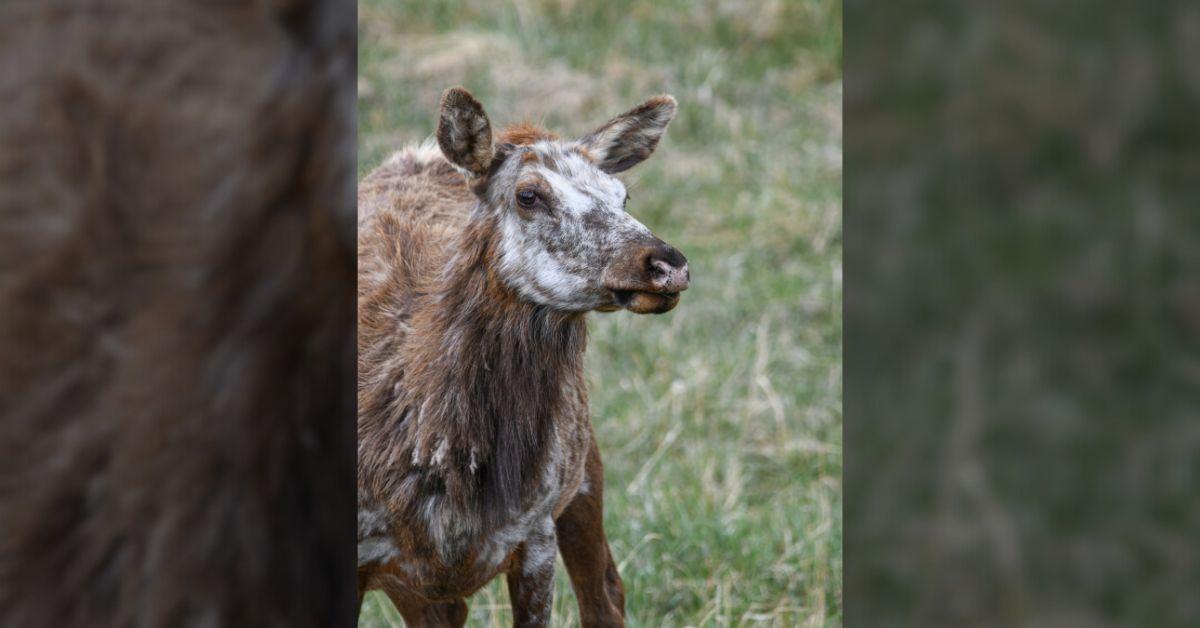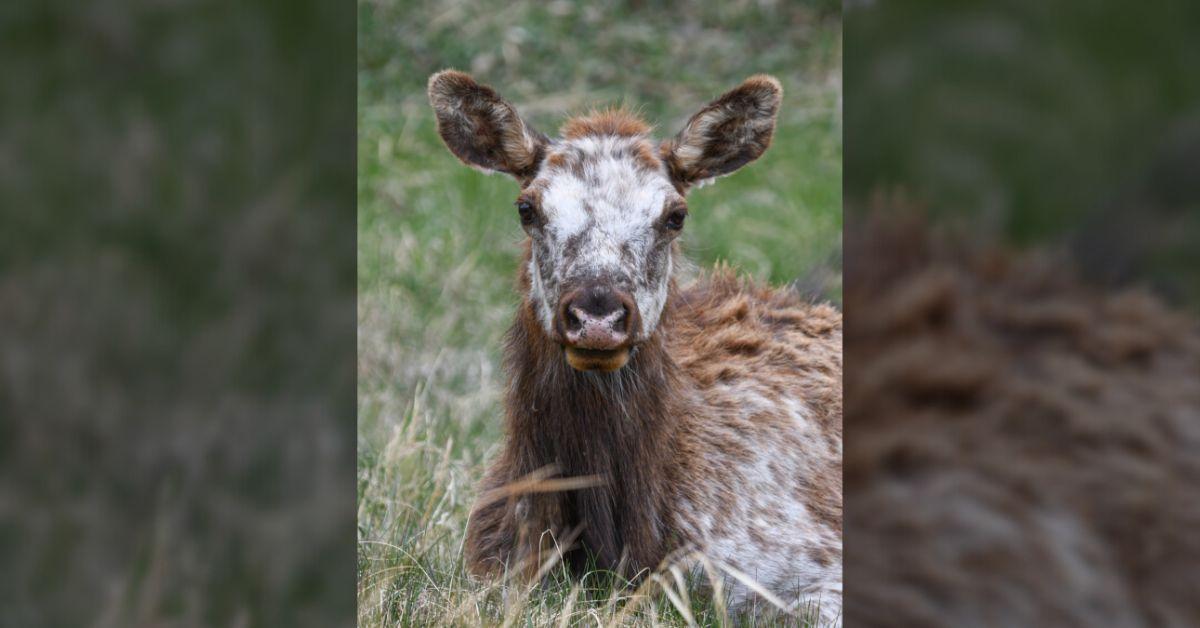
A rare piebald elk cow was spotted at the base of the Rocky Mountains in Colorado.
Rare Female Piebald Elk Fascinates in Colorado
A super rare piebald elk cow has been fascinating animal lovers and experts in Colorado.
Back in May, Colorado Parks and Wildlife shared "a glimpse of a rare elk" on social media, alongside photos of the stunning creature in Estes Park, at the base of Rocky Mountain National Park.
The female elk (known as a cow) exhibited white patches of fur all over her face and body, making her look like the sweetest, fluffiest powdered donut — and people have been talking about her ever since.

Piebald elk have white patches of fur throughout their face and body.
"This piebald female (cow) elk in Estes Park has been catching attention for a bit and for good reason," CPW wrote on Facebook. "This rare genetic trait occurs in about 1 out of every 100,000 elk and causes a mostly white coat of hair with some patches of brown. If you're lucky enough to catch a glimpse of her, remember to give her lots of space!"

There was debate as to whether the elk was piebald or had vitiligo.
The post caused lots of discussion among local wildlife enthusiasts, with one person sharing a video of the elk in question walking on the road with some elk pals, writing, "Late last year before snow season. Used to see her almost every morning going to work."
"Did Cafe Du Monde open up a shop up there? Looks like she got too close to someone eating a beignet and startled them," joked someone else.
Many others expressed concern that she could be eaten by wolves.

Colorado locals often see the famous rare elk.
Meanwhile, one person wasn't entirely sure the elk was in fact the rare piebald elk CPW thought she was.
"Is she piebald or does she have vitiligo?" they asked. "I would honestly lean more toward vitiligo, especially because the progression of her nose color has significantly gone from almost completely black, and is now pink with very few speckles, which is pretty common with vitiligo, especially progressive vitiligo."
Someone answered, "you are correct. Piebalds don't gain white. They are born with the spots they will have their entire life. I did post apic [sic] of her from September 2024 and as you can see she has substantially more white now!"
However, since CPW did not amend their statement, the official line remains that the cow is in fact a piebald elk.

The piebald condition is caused by a rare genetic mutation.
An article from the National Deer Association (elk are a type of deer) explains that the piebald condition is caused by a rare genetic mutation.
While the elk in the photographs didn't appear to be unwell, the condition can also cause deformities which sadly can lead to injury and even premature death.
